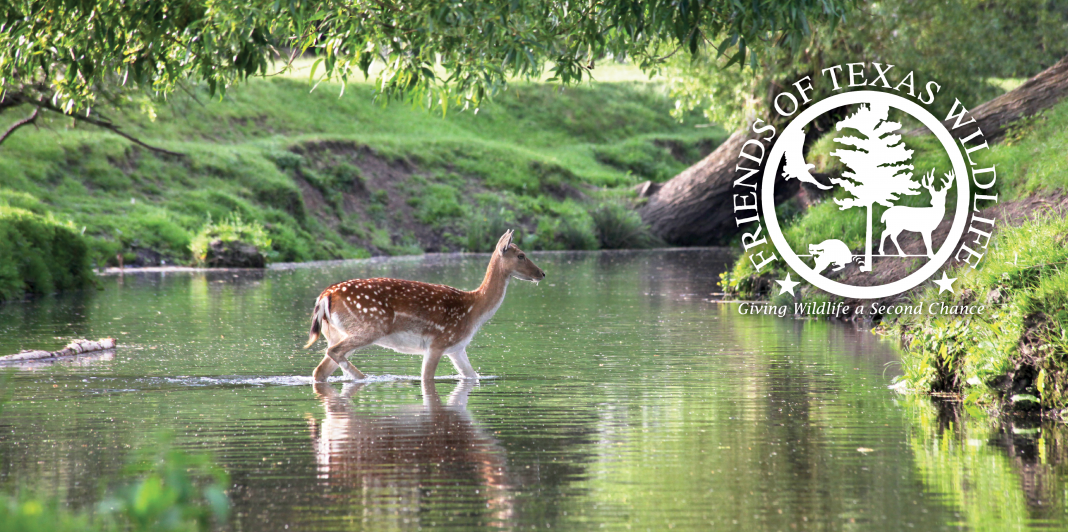It’s Fawn Time!
In our part of Texas, mid-May is generally when fawns begin to arrive. With all the development around us, it is now more common for human/deer interactions to take place, so fawns are therefore likely to be born in close proximity to where people are living. This month’s article will give some helpful information on normal deer/fawn behavior.
Female deer (does) can give birth to one, two, or even three fawns. Generally first-time moms have a single fawn, while more experienced does will have twins or triplets. Does will scope out a location they feel secure in to give birth as the newborn fawn(s) will stay close to that location for up to two weeks. Normal behavior for a doe is to bed her fawn down in what she deems a safe spot and then to leave the fawn alone while she goes off to feed. The reason she does this is that she does not want to draw predators close to her fawn. If the doe has more than one fawn, she will likely bed each fawn down in a separate location. Newborn fawns have no scent, so predators cannot easily find them. The mom returns every few hours (frequency depends on the age of the fawn) to nurse her baby. After tending to her young, she will often bed them back down very close to the same spot.
Normal behavior for a fawn is to lay down curled up on the ground; their head can be up or down (both are normal postures). The fawn is hard-wired to stay very still and not to move until the doe comes back to nurse them. People often come upon fawns in this position, and they can walk right up to the fawn without it moving or attempting to get away. Again, this is normal, but people often wrongly assume that the fawn has been abandoned. If you are concerned about a fawn you come upon, please reach out to rehabber for advice before you intervene! The vast majority of the time, the fawn is perfectly fine and it should be left alone. Concerning signs would be the following: the fawn is laying on its side with the legs straight out; the fawn has either fire ants or fly eggs on it; the fawn is in danger from flooding; the fawn is in or close to a road; the fawn is in danger from dogs; the fawn is obviously injured and/or bleeding. If the fawn is in a dangerous location, it can be moved to a safer, very nearby location. Once the fawn has been relocated, it should be laid back down, facing AWAY from you, and then patted several times firmly between the shoulders. This discourages the fawn from attempting to follow you and also signals it to stay put. If the fawn is injured or has any of the other danger signs, then please reach out as soon as possible to a rehabber or wildlife center for advice. Please never give any milk, formula, or food to a fawn you have found. The wrong food, or feeding any animal that is sick, cold, or dehydrated, can be deadly as the food cannot be digested properly. If you come upon a fawn that is in your fenced yard, most likely mom chose that spot because she felt it was safe from predators or danger (and mom can easily jump a tall fence to get back to her baby, so there are no worries there). A fawn’s best chance at survival is with its natural mom, so please try not to intervene. Generally, fawns will begin traveling with the doe when they are around two to three weeks old; at this age, they can run fast enough to keep up with the doe and they are better able to stay safe from predators.
To learn more about what we do and view pictures of many of the animals we assist, please visit our Facebook page at www.facebook.com/SavingTexasWildlife. Details and more specifies-specific flowcharts regarding how to help found animals can be viewed on our website at www.ftwl.org (click on “Help and Advice”). These charts are extremely helpful to determine if an animal truly needs rescuing or not. If you need assistance with a wildlife animal you have found, please call us at 281-259-0039 or email us at [email protected]. We offer many educational programs (including summer camps, birthday parties, educational presentations, and Second Saturdays).
In 2023, we will be offering several sessions of summer camp. Additionally, our educational visitor’s center is open the second Saturday of each month from 10 a.m. to 2 p.m., located at 29816 Dobbin Hufsmith Road, Magnolia, Texas. Our next Second Saturday will be on June 10
($5 per person, kids three and under are free).















